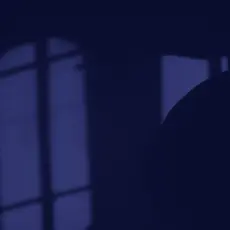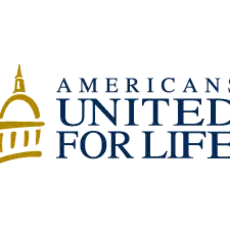Next month, the Supreme Court will hear arguments in Whole Woman’s Health v. Hellerstedt, a challenge to a restrictive Texas abortion law and a key test of the anti-choice movement’s long-term strategy of eliminating abortion access by regulating abortion providers out of existence.
Central to the case is the claim that laws like the one in Texas, which could close three quarters of the state’s abortion clinics if it’s fully enacted, impose tough regulations on abortion providers in order to protect the health of the women who take advantage of their services.
Now, in an effort to claim that they are the ones who are really concerned about women’s health, anti-choice groups are appropriating the term “back-alley abortion,” using the phrase that has long described dangerous illegal procedures in the years before Roe to claim that it is in fact legal abortion that forces women into the “back alley.”
In an article for the Federalist yesterday, Americans United for Life (AUL) attorney Mailee Smith wrote that the Texas case has “prompted a discussion about what is more important: ‘access’ to the current back alley of abortion now offered by an industry that puts profits over people, or commonsense health and safety standards the Court has historically supported.”
It’s a line that AUL has been repeating in the past few years, encouraged in part by the case of Kermit Gosnell, the Philadelphia abortion provider who was convicted of several gruesome crimes after the lax enforcement of regulations allowed him to stay in business.
Speaking at a Heritage Foundation event in 2013 after Gosnell’s conviction, AUL’s president, Chairmaine Yoest, declared, “Gosnell is sadly not an aberration. Ladies and gentlemen, we already have the back alley of abortion in this country and the back alley of abortion in this country is legal abortion.” A 2012 law review article by AUL attorney Clarke Forsythe in favor of clinic regulations was titled “A Road Map Through The Supreme Court’s Back Alley.” A 2013 AUL guide to regulating abortion clinics declared, “abortion clinics across the nation have become the true ‘back alleys’ of abortion mythology.”
Other groups have caught on to the messaging too. Speaking of Gosnell’s conviction in 2013, the Susan B. Anthony List’s Marjorie Dannenfelser claimed that “the result of the current law is that we’re living back-alley abortions right now.”
In a set of talking points posted on its website in 2014, the National Right to Life Committee recommended countering pro-choice arguments about the risk of back-alley abortions by saying, “The only thing that legalizing abortion did was to give abortionists the ability to hang their shingle on the front door and stop using the back alley!”
Few would disagree that Gosnell — who was convicted of killing a patient and three infants who were born alive at his squalid clinic — was offering the functional equivalent of back-alley abortions. But the anti-choice movement is instead attempting to exploit the Gosnell case to claim that legal abortion is back-alley abortion, and to use it to justify unnecessary regulations meant to cut shut down safe providers.
Abortion rights opponents often attempt to downplay Ctrl+Click or tap to follow the link"> the real danger of illegal abortions women faced before the liberalization of abortion laws and Roe. Although women with money and connections could often obtain a safe hospital abortion (whether or not it was technically legal) in the years leading up to Roe, the burden of unsafe abortion fell disproportionately on poor women and women of color.
Guttmacher reports that although rates of death from unsafe abortion fell as medical care improved on all levels, 200 women died from unsafe abortion in 1965, making up 17 percent of all pregancy-related deaths that year. Even as states began to liberalize their abortion laws, many women without access to safe procedures still obtained illegal abortions.
As a number of commentators pointed out when Gosnell’s crimes came to light, forcing safe clinics to close would only force more women to predatory providers like Gosnell.
From the beginning, anti-choice activists have acknowledged that clinic regulations like those in Texas are meant not to protect women but to challenge legal abortion. In a 2007 memo arguing against “personhood” laws that attempt to ban all abortions in one fell swoop, influential anti-abortion attorney James Bopp listed clinic regulations like Texas’ as one way to “improve the legal situation” of the anti-abortion movement without fully taking on the constitutional right to abortion. In its annual package of model legislation for state legislators, AUL touts clinic-regulation measures as part of the effort to “unravel” Roe and facilitate its “demise.”
Texas’ law, which AUL says it helped write, requires abortion clinics to remodel if they don’t meet the stringent standards of ambulatory surgical clinics, which in general perform more complicated and riskier procedures than abortion. It also mandates that abortion providers have admitting privileges at a local hospital, an unnecessary requirement that it is sometimes difficult or impossible for abortion providers to meet. (This is in part because anti-abortion activists Next month, the Supreme Court will hear arguments in Whole Woman’s Health v. Hellerstedt, a challenge to a restrictive Texas abortion law and a key test of the anti-choice movement’s long-term strategy of eliminating abortion access by regulating abortion providers out of existence .
Central to the case is the claim that laws like the one in Texas, which could close three quarters of the state’s abortion clinics if it’s fully enacted, impose tough regulations on abortion providers in order to protect the health of the women who take advantage of their services.
Now, in an effort to claim that they are the ones who are really concerned about women’s health, anti-choice groups are appropriating the term “back-alley abortion,” using the phrase that has long described dangerous illegal procedures in the years before Roe to claim that it is in fact legal abortion that forces women into the “back alley.”
In an article for the Federalist yesterday, Americans United for Life (AUL) attorney Mailee Smith wrote that the Texas case has “prompted a discussion about what is more important: ‘access’ to the current back alley of abortion now offered by an industry that puts profits over people, or commonsense health and safety standards the Court has historically supported.”
It’s a line that AUL has been repeating in the past few years, encouraged in part by the case of Kermit Gosnell, the Philadelphia abortion provider who was convicted of several gruesome crimes after the lax enforcement of regulations allowed him to stay in business.
Speaking at a Heritage Foundation event in 2013 after Gosnell’s conviction, AUL’s president, Chairmaine Yoest, declared, “Gosnell is sadly not an aberration. Ladies and gentlemen, we already have the back alley of abortion in this country and the back alley of abortion in this country is legal abortion.” A 2012 law review article by AUL attorney Clarke Forsythe in favor of clinic regulations was titled “A Road Map Through The Supreme Court’s Back Alley.” A 2013 AUL guide to regulating abortion clinics declared, “abortion clinics across the nation have become the true ‘back alleys’ of abortion mythology.”
Other groups have caught on to the messaging too. Speaking of Gosnell’s conviction in 2013, the Susan B. Anthony List’s Marjorie Dannenfelser claimed that “the result of the current law is that we’re living back-alley abortions right now.” (is this quote correct? Seems awk)
In a set of talking points posted on its website last year, the National Right to Life Committee recommends countering pro-choice arguments about the risk of back-alley abortions by saying, “The only thing that legalizing abortion did was to give abortionists the ability to hang their shingle on the front door and stop using the back alley!”
Few would disagree that Gosnell — who was convicted of killing a patient and three infants who were born alive at his squalid clinic — was offering the functional equivalent of back-alley abortions. But the anti-choice movement is instead attempting to exploit the Gosnell case to claim that legal abortion is back-alley abortion, and to use it to justify unnecessary regulations meant to cut shut down safe clinics.
Abortion rights opponents often attempt to downplay the real danger of illegal abortions women faced before the liberalization of abortion laws and Roe. Although women with money and connections could often obtain [a] safe hospital abortions (whether or not it was technically legal) in the years leading up to Roe, the burden of unsafe abortion fell disproportionately on poor women and women of color.
Guttmacher reports that although rates of death from unsafe abortion fell as medical care improved on all levels, 200 women died from unsafe abortion in 1965, making up 17 percent of all pregancy-related deaths that year. Even as states began to liberalize their abortion laws, many women without access to safe procedures still obtained illegal abortions.
As a number of commentators pointed out when Gosnell’s crimes came to light, forcing safe clinics to close would only force more women to predatory providers like Gosnell.
From the beginning, anti-choice activists have acknowledged that clinic regulations like those in Texas are meant not to protect women but to challenge legal abortion. In a 2007 memo arguing against “personhood” laws that attempt to ban all abortions in one fell swoop, influential anti-abortion attorney James Bopp listed clinic regulations like Texas’ as one way to “improve the legal situation” of the anti-abortion movement without fully taking on the constitutional right to abortion. AUL considers its model clinic-regulation legislation as part of its effort to “unravel” Roe and facilitate its “demise.”
Texas’ law, which AUL says it helped write, requires abortion clinics to remodel if they don’t meet the stringent standards of ambulatory surgical clinics, which in general perform more complicated and riskier procedures. It also mandates that abortion providers have admitting privileges at a local hospital, an unnecessary requirement that it is difficult or impossible for some abortion providers to meet. (This is in part because anti-abortion activists pressure hospitals not to offer such admitting privileges, again showing that their goal is closing clinics, not improving safety standards.
This law isn’t meant to eliminate “back-alley” abortions, as its backers are now claiming. It’s meant to cut off access for the women who can least afford it and to chip away at the legal framework of Roe, which would, ironically, mostly likely lead to more true "back-alley abortions"
">pressure hospitals not to offer such admitting privileges, again showing that their goal is closing clinics, not improving safety standards.)
The law behind the Whole Women's Health case isn’t meant to eliminate “back-alley” abortions, as its backers are now claiming. It’s meant to cut off access for the women who can least afford it and to chip away at the legal framework of Roe, which would, ironically, mostly likely lead to more true back-alley abortions.






